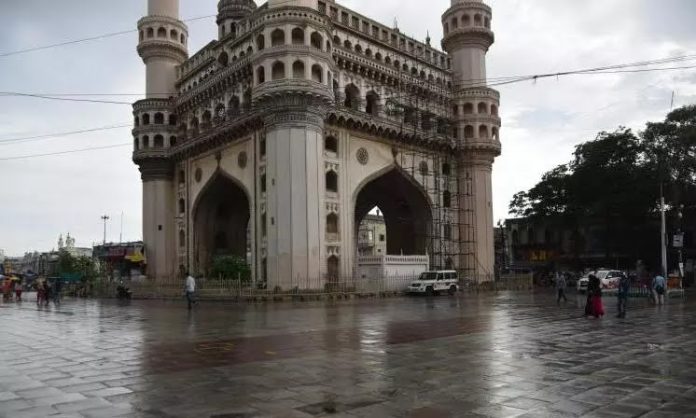Hyderabad, Sep 4: Residents of Hyderabad’s Old City have expressed relief as they largely remain unaffected by water stagnation issues during heavy rains, a stark contrast to the struggles faced by other parts of the city. This resilience is attributed to the robust and enduring engineering of the Nizam and Mughal eras, which continues to serve the community effectively, reported the Deccan Chronicle.
Key areas such as Falaknuma, Moghalpura, Shalibanda, Charminar, Moghalpura Hussainalam, and Etabar Chowk, situated at higher elevations, have largely avoided the waterlogging problems that plague other neighborhoods. The low-lying areas of Bilalnagar and Doodhbowli, which faced issues during the 2020 floods, have since seen significant improvements with the installation of new stormwater drains by municipal authorities.
Dr. Mohammed Ali, a veteran dental practitioner in Charminar, highlighted the historical significance of these infrastructures. “Around 100 years ago, when the Old City had a population of four lakhs, Nizam Mir Osman Ali constructed an 11-kilometer-long, eight-foot-wide nala from Barkas via Falaknuma. This drainage system, which connects hundreds of localities to the Musi River, remains functional and effective even today.”
The old pipeline systems, built by the Nizam, have proven to be remarkably resilient. Mohammed Waheed, a 77-year-old shopkeeper from Doodh Bowli, noted, “Despite the Old City’s population now exceeding 60 lakhs, the pipelines remain robust, with no significant complaints of damage, except in a few localities.”
One of the key factors behind the enduring effectiveness of these systems is the foresight and skill of Mughal and Nizam-era engineers, who preserved natural hills at MM Pahadi, Falaknuma Palace, Bibi Ka Chasma, and Shalibanda. Mohammed Khuddus, a resident of Pahadishareef, commented, “Thanks to appropriate planning, the parallel stormwater drains have been a blessing.”
The durability of Mughal architecture and engineering contrasts sharply with the frequent failures observed in modern infrastructure across India. Recent years have seen several dams, bridges, and other structures collapsing or requiring extensive repairs due to design flaws or poor construction practices. This comparison underscores the meticulous craftsmanship and forward-thinking of historical builders, whose work continues to protect and serve communities centuries later.
Venkanna, Charminar’s zonal commissioner, also emphasized the city’s proactive measures after the 2020 floods, including the construction of box drains and the Murki Nala project. This long SNDP line, starting from Palle Cheruvu in Rajendranagar and ending in Malakpet, effectively prevents water stagnation in the entire south zone.
The enduring strength of Mughal architecture not only reflects the ingenuity of the past but also serves as a poignant reminder of the need for quality and sustainability in modern infrastructure projects. As India continues to build and expand, these historical lessons in engineering could be the key to ensuring long-lasting and reliable developments.




